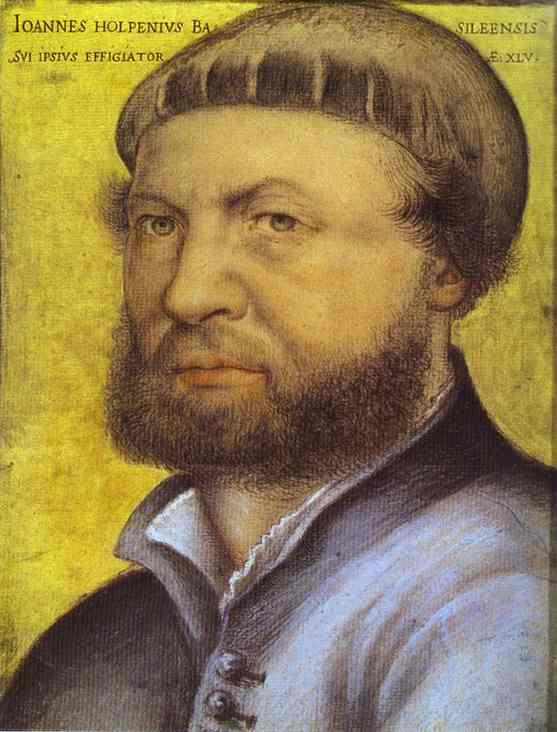The directory «Artists»
Holbein Hans
(1497–1543)

Hans Holbein the Younger, son of the painter Hans Holbein the Elder, was both in education and career, a cosmopolitan. At the early age of 16, after training by his father, he went travelling with his brother Ambrosius. He is first mentioned in 1515 in Basel, where he entered the workshop of Hans Herbster. His first public commissions were carried out in Lucerne in 1517. In 1519, Holbein became a member of the painters’ guild in Basel, and in 1520 received a citizenship of Basel. His artistic life may be divided into 4 periods. He worked in Basel, Lucerne, and Zurich from 1515 to 1526. From 1526 to 1528 he was in London, but returned to Basel for the next four years. From 1532 he was again in London and died there of the plague in 1543.
Among works executed during his first period at Basel he was largely employed by publishers to make designs of woodcuts, including illustrations of Luther's Old and New Testaments (1522-1523). His most important woodcuts The Dance of Death and the Old Testament Cuts, were not issued till 1538.
Religious paintings form a significant part of the work Holbein produced in Basel. From modest, private commissions in the period 1519-20 (e.g. the Man of Sorrows), through The Body of the Dead Christ in the Tomb (1521), to a culmination both in emotion and design in The Passion of Christ (c. 1524).
From 1528, he concentrated solely on portrait painting. In London he executed portraits of the German merchants of the Hanseatic League, e,g. Portrait of Georg Gisze of Danzig (1532), Portrait of Derich Born (1533), and soon came to the notice of Henry VIII and members of his court. His observation of detail, psychological penetration of his sitters and superb handling of color made him the greatest portrait painter of German art.
Gambia, 2004, Paintings from the Hermitage